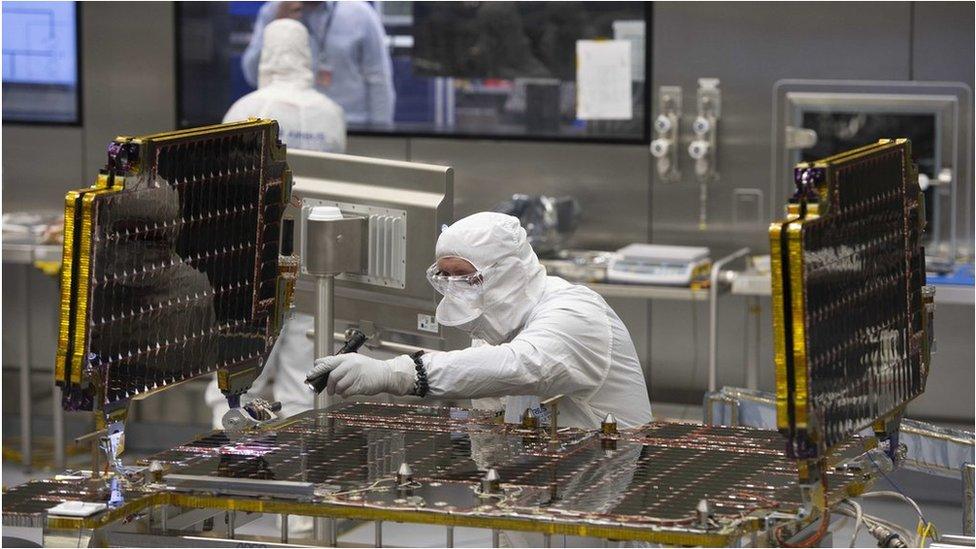Quarry doubles as moonscape for space rover trials
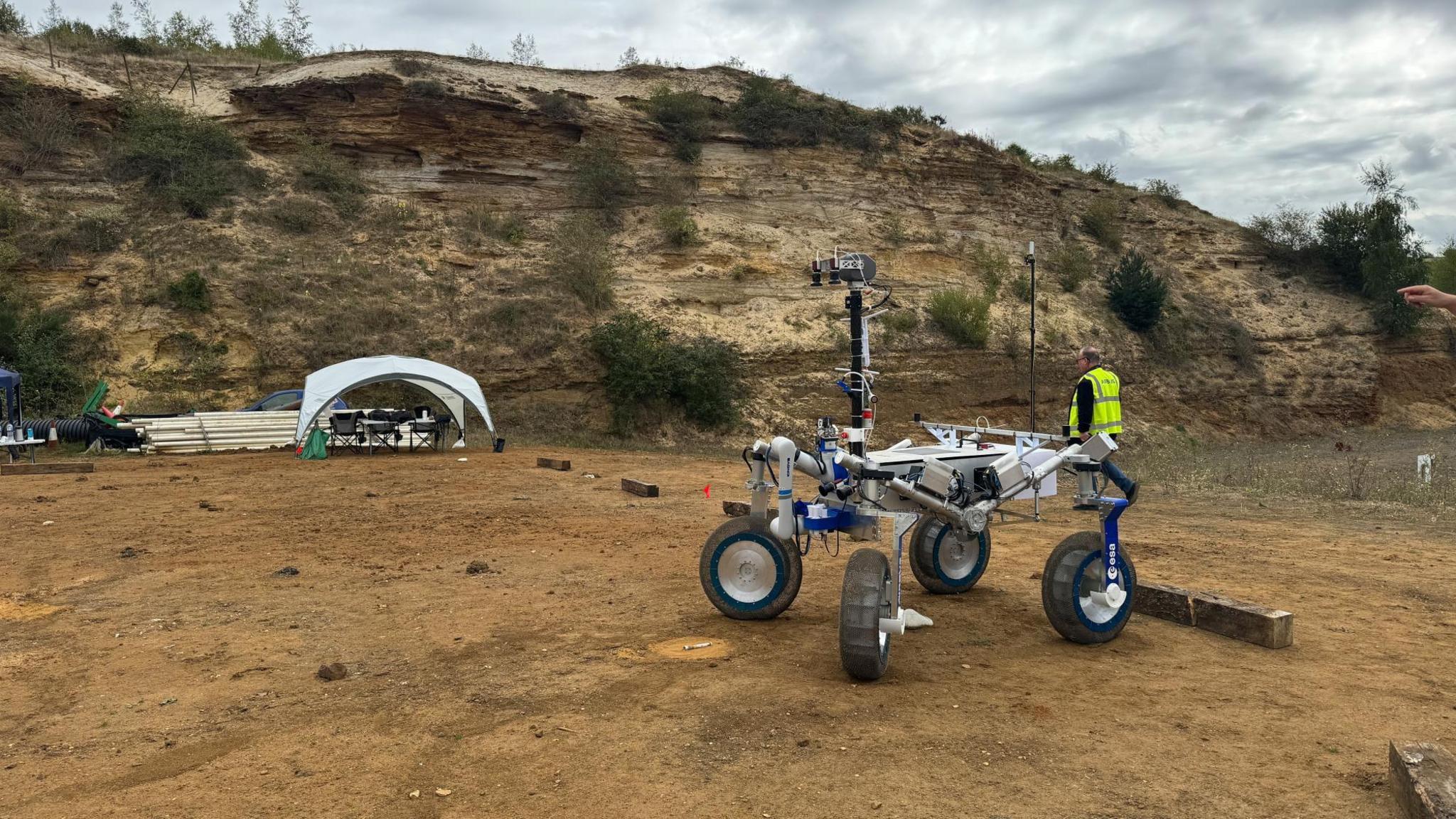
The four-wheel rover known as 'Codi' can drive to and retrieve samples with an accuracy of about 10cm (4in)
- Published
Two Mars Rovers have been spotted carrying out tests in a quarry - despite no plans to send them into space anytime soon.
The four-wheel and six-wheel vehicles have been developed by the aerospace company Airbus, in Stevenage, Hertfordshire.
A mission involving one of the Rovers to bring back rock samples from the Red Planet was scrapped in 2022 by US and European space agencies.
The European Space Agency (ESA) continues to fund research that will develop rover capabilities in Europe - and Airbus believes the technology could also be used for future missions on the Moon.
"The moon is a stepping stone to Mars so there is obviously a lot of interest in going back and you can envisage rovers being part of the lunar ecosystem," according to Chris Draper, Airbus rover programme manager.
Both rovers were tested in a quarry near Leighton Buzzard, Bedfordshire, as the company said the unique and dynamic landscape could not be replicated in their Stevenage test facility.
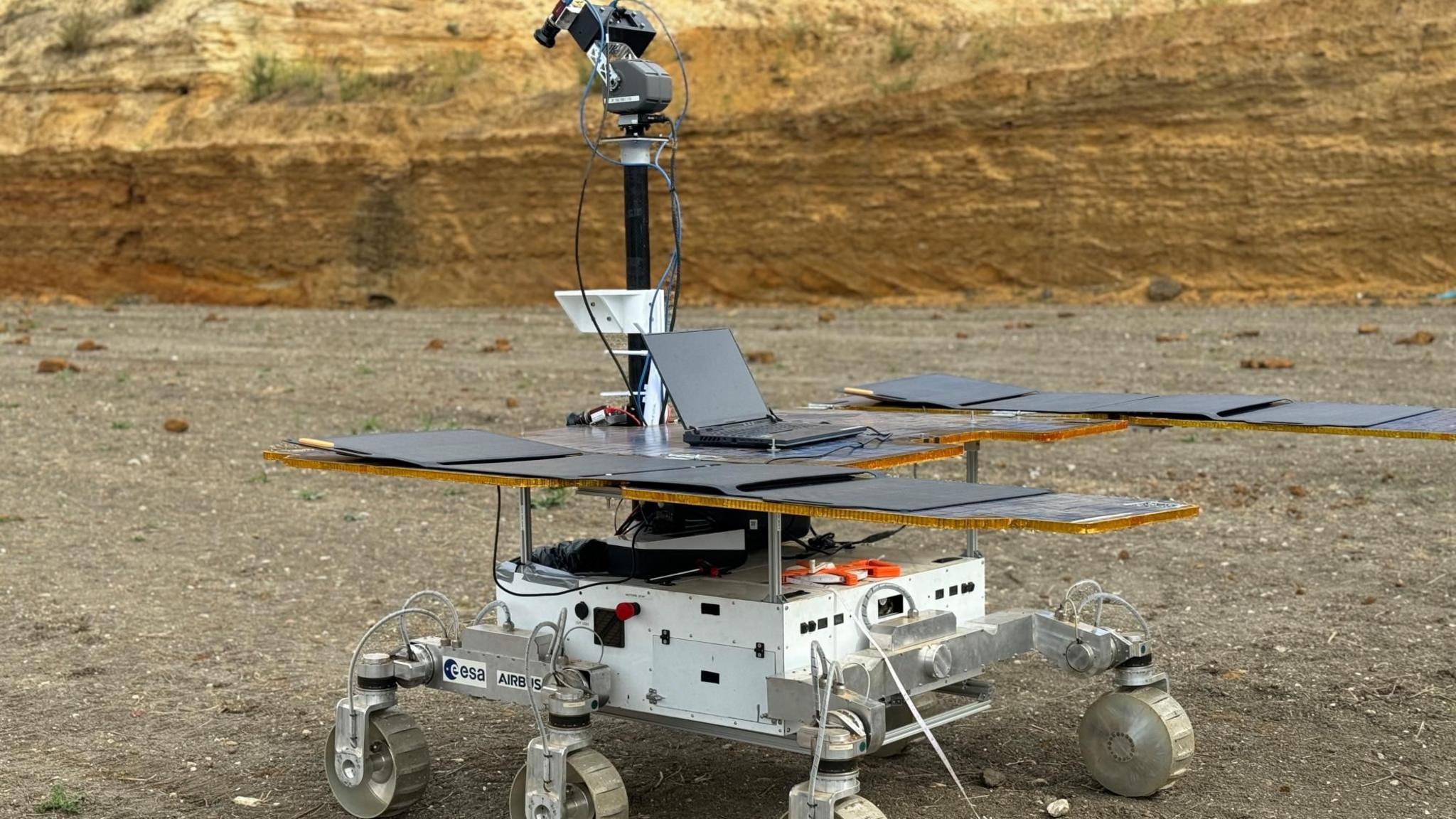
Also put through its paces was six-wheeled rover 'Charlie', which is trialling a sensor known as LiDAR, to allow rovers to move in the dark without cameras
The four-wheeled rover - known as Codi - is equipped with a robotic arm which will autonomously pick up and carry sample canisters, Airbus said, the first test of this capability anywhere in the world.
It was instructed to drive to samples and then, using a camera and arm, identify and pick them up before safely storing them within itself.
A six-wheeled rover, called Charlie, can nimbly climb over and navigate obstacles twice the diameter of the wheel without getting stuck or falling on its side.
It is also trialling a sensor known as LiDAR, which allows rovers to move in the dark without cameras.
This could be useful on the moon, where lighting conditions can be challenging, according to Geoffray Doignon from Airbus.

Geoffray Doignon believes there is still value in developing the technology.
Mr Doignon, technical lead for rover prototyping activities, said although there were no missions planned, it was still important to test the rovers.
"This technology is still valuable for the next mission to Mars and the Moon," he said.
"There a lot of things that need to be done as efficiently as possible, so everything we learn... has a direct impact on our ability to do better on the next missions."
He also said that the more projects the teams get to work on, the more experienced they would be when preparing for future missions.
"During these field trials we shall demonstrate to people that there is value there and it was worth investing in," he said.
"That's what we are doing now and we are being pretty successful at it."
LISTEN: Mars rovers tested in Leighton Buzzard
Get in touch
Do you have a story suggestion for Beds, Herts & Bucks?
Follow Beds, Herts and Bucks news on BBC Sounds, Facebook, external, Instagram, external and X, external.
- Published4 October 2022
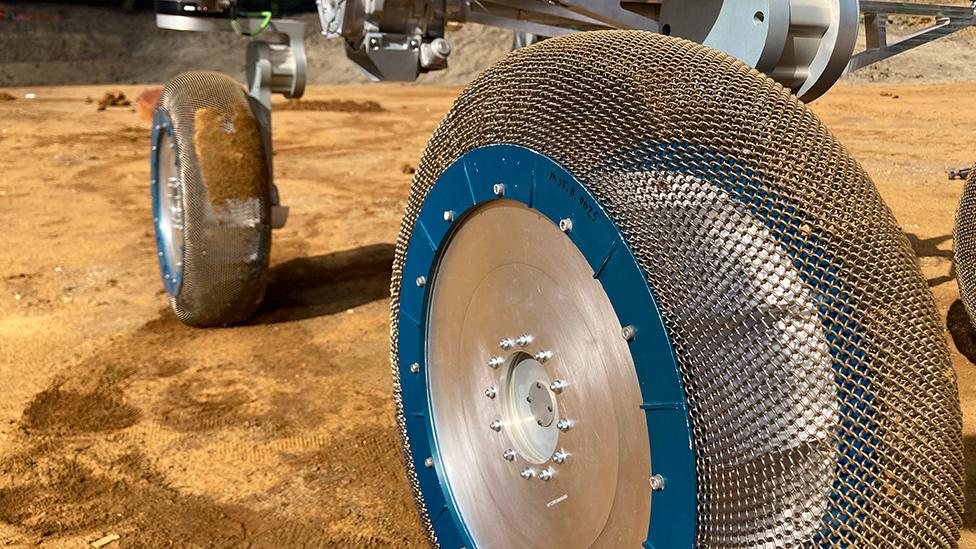
- Published5 December 2019
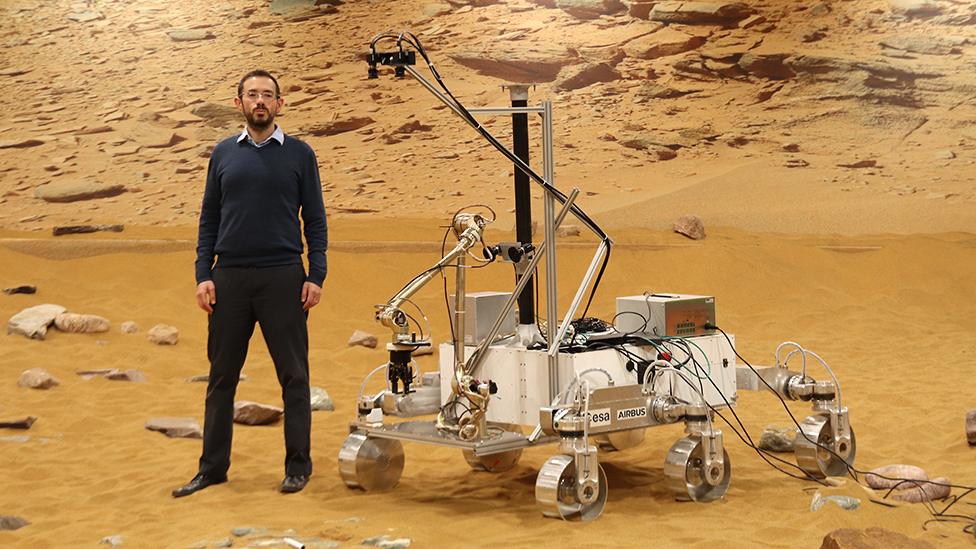
- Published24 November 2022
